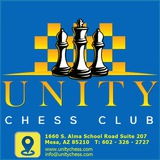📘 13...Nfe4?!
Black has an isolated pawn on d5, so he should be patient and avoid unnecessary exchanges. Black should have played Qd7, to cover f5-square. But after the game's move, two minor-pieces will be exchanged.
14.N×e4! N×e4
(d×e4? 15.Nf5! Bf6 16.Q×d8 Rc×d8 17.B×f6 g×f6 18.Rfc1 +/-)
15.Nf5! Bf6 16.B×f6 N×f6 +/=.
Black has an isolated pawn on d5, so he should be patient and avoid unnecessary exchanges. Black should have played Qd7, to cover f5-square. But after the game's move, two minor-pieces will be exchanged.
14.N×e4! N×e4
(d×e4? 15.Nf5! Bf6 16.Q×d8 Rc×d8 17.B×f6 g×f6 18.Rfc1 +/-)
15.Nf5! Bf6 16.B×f6 N×f6 +/=.
📘 39.Rde1?
White could have Swapped off all four rooks, to reach a winning position for three reasons:
1- The white king is more active
2-His pawn on g5-square has blocked black's two kingside pawns.
3-he has a 'reserve move' due to being his f-pawn on f3. If the pawn was on f4, the game was drawn, and eventually, the position could have been reached to the following diagram👇👇👇
White could have Swapped off all four rooks, to reach a winning position for three reasons:
1- The white king is more active
2-His pawn on g5-square has blocked black's two kingside pawns.
3-he has a 'reserve move' due to being his f-pawn on f3. If the pawn was on f4, the game was drawn, and eventually, the position could have been reached to the following diagram👇👇👇
Now, after the white f4 move, White wins by bringing Black in a zugzwang position.
24.Bg5!
White needs to exchange this bishop to speed up his attack on Black's king, one motive being to introduce the queen into the attack via h6. This trade would rarely be good for White in 'normal' positions, but here it's the best way to open a second front and try to exploit the temporary displacement of Black's queen and knight. The exchange of 'good' or 'bad' pieces needs to be considered in context, rather than as some absolute truth.
24.Nh2 with the idea of f4 is also logical, although black after 24...Rc8 25.f4 exf4 26.Bxf4 Rxc1 27.Qxc1 Qb6+ 28.Be3 Bg5! finds a good game.
24.Bh6 Rc8 only helps black to extend his play on the queenside.
White needs to exchange this bishop to speed up his attack on Black's king, one motive being to introduce the queen into the attack via h6. This trade would rarely be good for White in 'normal' positions, but here it's the best way to open a second front and try to exploit the temporary displacement of Black's queen and knight. The exchange of 'good' or 'bad' pieces needs to be considered in context, rather than as some absolute truth.
24.Nh2 with the idea of f4 is also logical, although black after 24...Rc8 25.f4 exf4 26.Bxf4 Rxc1 27.Qxc1 Qb6+ 28.Be3 Bg5! finds a good game.
24.Bh6 Rc8 only helps black to extend his play on the queenside.
📘20.Nh2!
White intends to gain more space on the kingside by playing f4 and also he can create some threats against the black king.
20.e5 leads to exchange some pieces which make black's defensive task easier: 20...Nxe5 21.Nxe5 fxe5 22.Qxe5 Qxe5 23.Rxe5 Rfe8=.
20.Rcd1 of course, the swapping the rooks off is also good for black: 20...Rxd1 21.Rxd1 Rd8.
White intends to gain more space on the kingside by playing f4 and also he can create some threats against the black king.
20.e5 leads to exchange some pieces which make black's defensive task easier: 20...Nxe5 21.Nxe5 fxe5 22.Qxe5 Qxe5 23.Rxe5 Rfe8=.
20.Rcd1 of course, the swapping the rooks off is also good for black: 20...Rxd1 21.Rxd1 Rd8.
📕Unity Chess Multiple Choice 153
anonymous poll
C: Ra4 – 8
👍👍👍👍👍👍👍 73%
B: Qf1 – 2
👍👍 18%
A: N×b5 – 1
👍 9%
👥 11 people voted so far.
anonymous poll
C: Ra4 – 8
👍👍👍👍👍👍👍 73%
B: Qf1 – 2
👍👍 18%
A: N×b5 – 1
👍 9%
👥 11 people voted so far.
📕Unity Chess Multiple Choice 154
anonymous poll
A: Bd4 – 9
👍👍👍👍👍👍👍 60%
C: h4 – 6
👍👍👍👍👍 40%
B: B×c5
▫️ 0%
👥 15 people voted so far.
anonymous poll
A: Bd4 – 9
👍👍👍👍👍👍👍 60%
C: h4 – 6
👍👍👍👍👍 40%
B: B×c5
▫️ 0%
👥 15 people voted so far.
Soviet grandmasters Viktor Korchnoi, Tigran Petrosian and Yuri Averbakh in a training session. Early 1970.
@UnityChess
@UnityChess
This media is not supported in your browser
VIEW IN TELEGRAM
The opening game of the epic Kasparov v Deep Blue match, May 1997. Or, in AlphaZero's vocabulary, Stone Age.
@UnityChess
@UnityChess
Future grandmaster Vladimir Akopian (born 7th December, 1971) with his then-trainer, Soviet Master Oleg Dementiev. Akopian was born in Baku, but moved to Yerevan with his family in 1985
@UnityChess
@UnityChess
The 1948 World Championship match-tournament (The Hague/Moscow); Mikhail Botvinnik (USSR) faces Sammy Reshevsky (USA) in the Hall of Columns in the House of Unions in the Soviet capital.
@UnityChess
@UnityChess
🌸 Alexandra Kosteniuk
🌸 Russian chess Grandmaster
🌸 12th Women’s World Chess Champion and Chess Queen of Russia
@UnityChess
🌸 Russian chess Grandmaster
🌸 12th Women’s World Chess Champion and Chess Queen of Russia
@UnityChess
